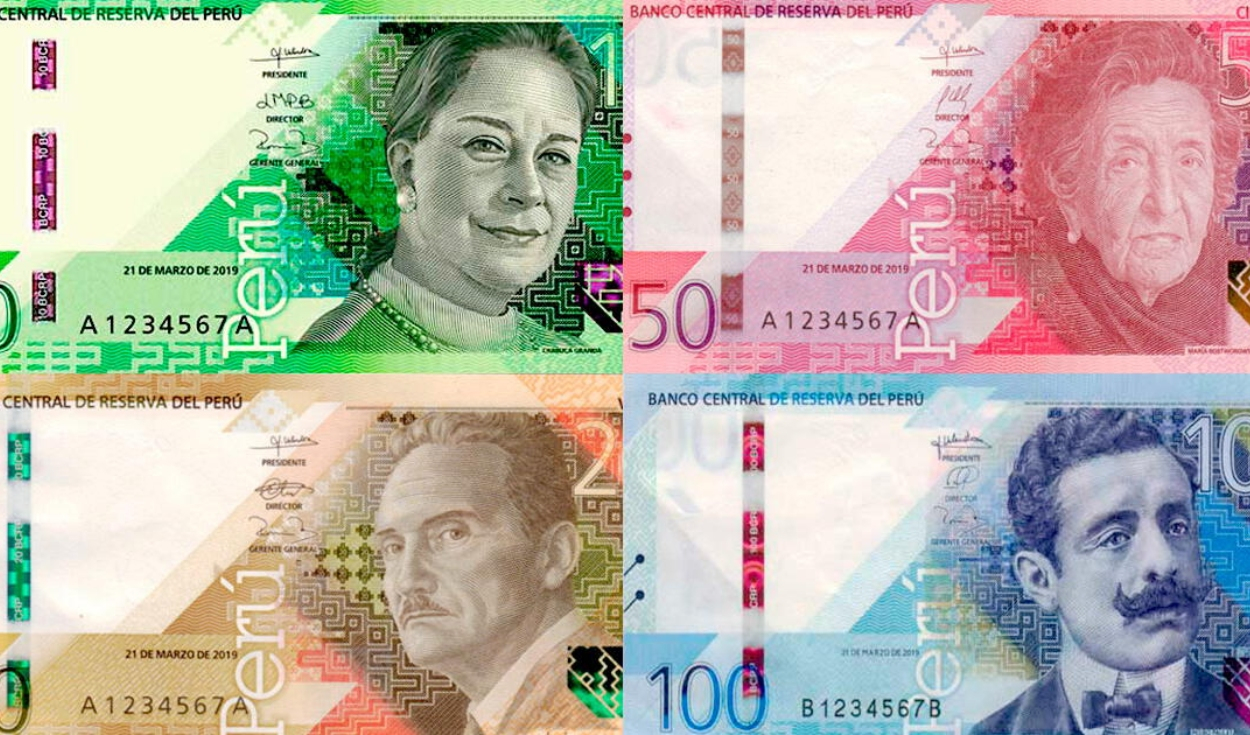
The Central Reserve Bank of Peru (BCR) warned Peruvians about a new scam mode that is spreading on social networks. These are the so-called G5 bills, a currency of supposedly high value that does not generate any type of profit or profitability and has no special value.
Abraham de la Melena, specialist in Currency Analysis at the BCR, emphasized that the G5 bills They do not currently exist, so they should be considered a form of scam.
The BCR talks about the G5 bills
“These assumptions tickets They do not have any special quality nor can they put the financial system at risk. We ask citizens to properly recognize their ticketswhether they are true or not,” Abraham de la Melena told Andina.
The specialist stated that the Central Reserve Bank uses the same technology and type of printing in all its tickets, ensuring that there are no differences between them when they are authentic. De la Melena reiterated that the use of this uniform technology ensures the authenticity of the tickets.
“The printing system that generates the high relief and all the other tools that are used to generate the tickets They are only sold to central banks. You cannot go and ask for this type of printer, because they are not going to sell them to you. The guarantee against this type of scam is that the technology does not exist to achieve the quality of our prints. tickets“he commented.
What is the type of scam with G5 bills?
The expert of BCR explained that criminals or scammers promote videos on social networks that they themselves record where they offer the sale of tickets supposedly high quality.
When a person tries to contact these pseudo-sellers, they will never provide a real name, but rather an alias to protect themselves from possible complaints. Additionally, they will send a QR code or payment link to purchase the fake currencywhich will never arrive, warns Abraham of the Mane.
How to recognize an authentic bill?
The BCR specialist explained that today an interesting concept is used worldwide, used in the Euro dissemination campaign, known as ‘Touch, Look and Turn’. Reviewing a ticket should take between 7 and 15 seconds.
Touch: When touching the bill, you should check the texture, resistance and sound. The raw material of the tickets It is cotton, which gives them a resistance that fakes do not have. When passing the fingertips over certain areas, such as the name of the Central Bank, the character and the National Coat of Arms, the characteristic relief of the intaglio printing is clearly perceived.
Look: When you place the bill in front of a light source in the print-free area, you will see the reproduction of the character in multiple shades, known as the watermark. This is a first-rate security element that most of the world’s banknotes have. The watermark has a multitonal and three-dimensional appearance, characteristics that fakes do not possess.
Turn: Below the National Shield, you can see the numerical value of the bill, printed with an ink that changes color when you rotate it slightly. On the 10, 20, 50 and 100 sole bills, the ink changes from fuchsia to greenish gold, and on the 200 sole bills, it changes from green to blue.
Source: Larepublica
Alia is a professional author and journalist, working at 247 news agency. She writes on various topics from economy news to general interest pieces, providing readers with relevant and informative content. With years of experience, she brings a unique perspective and in-depth analysis to her work.












